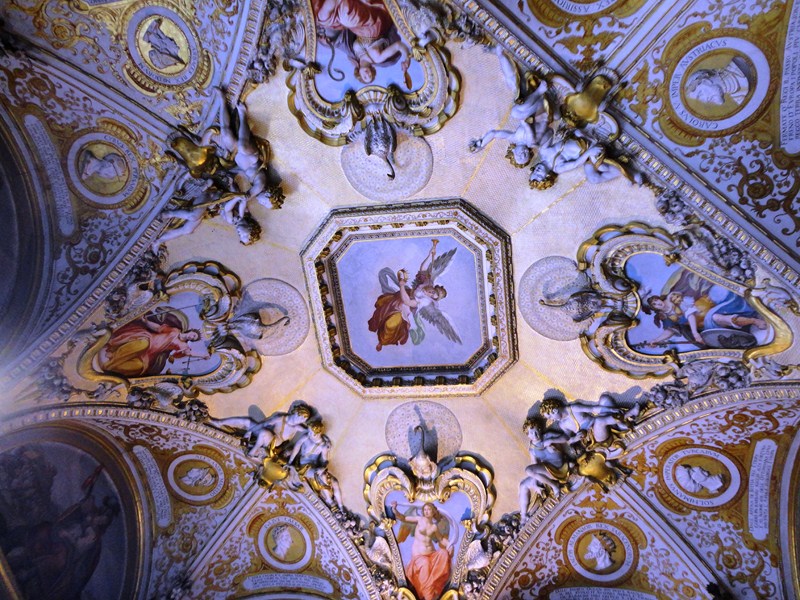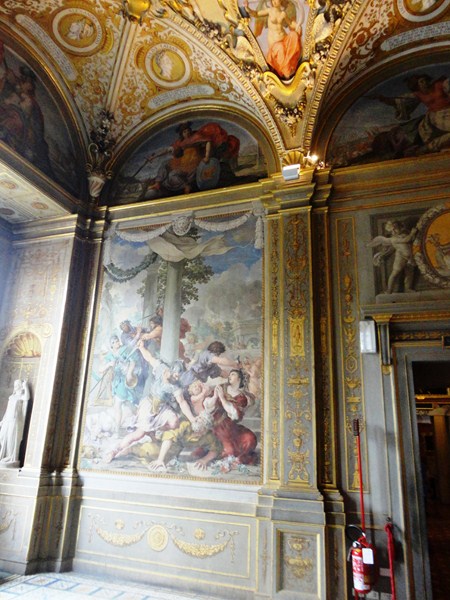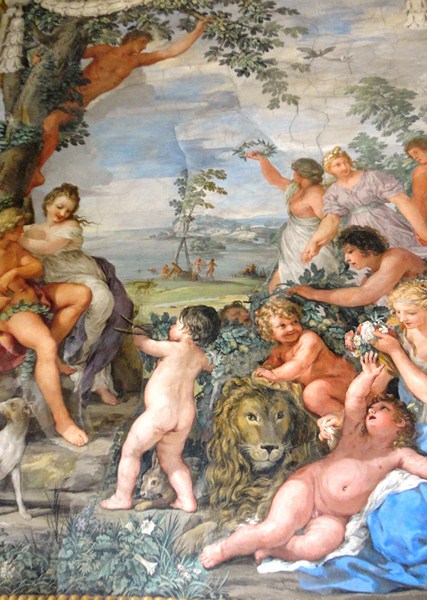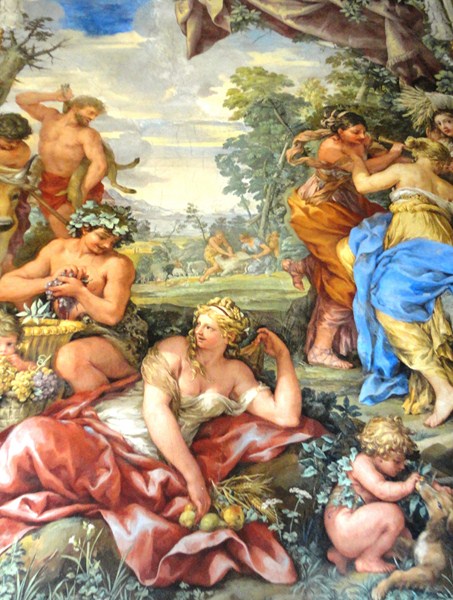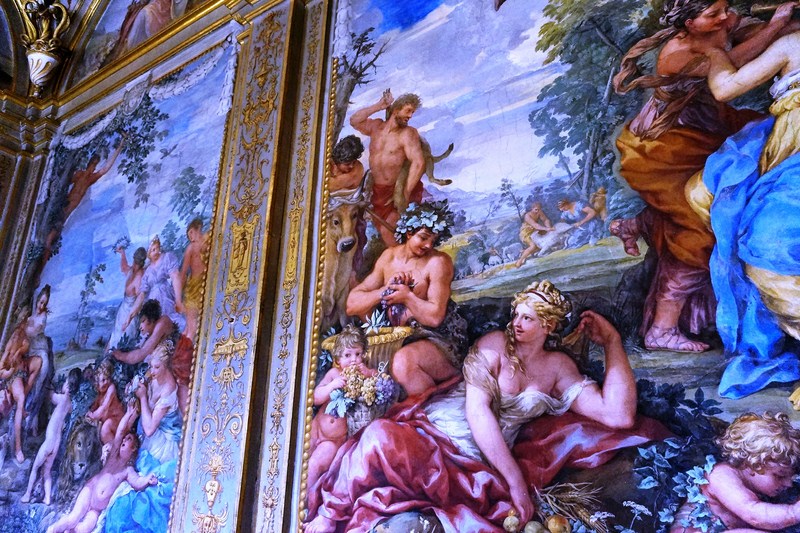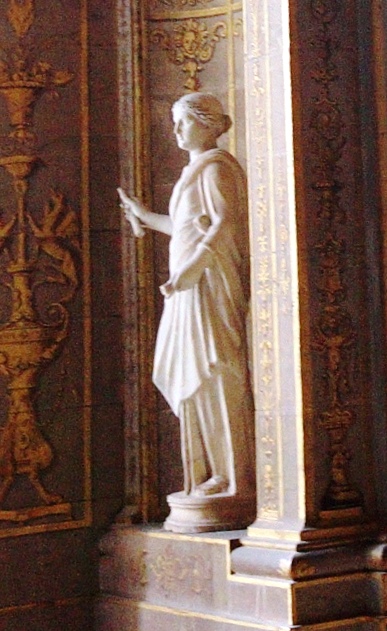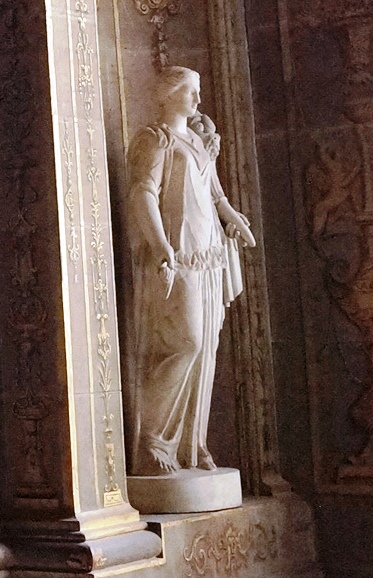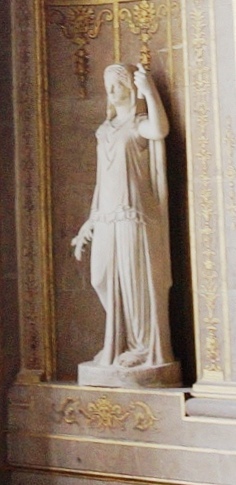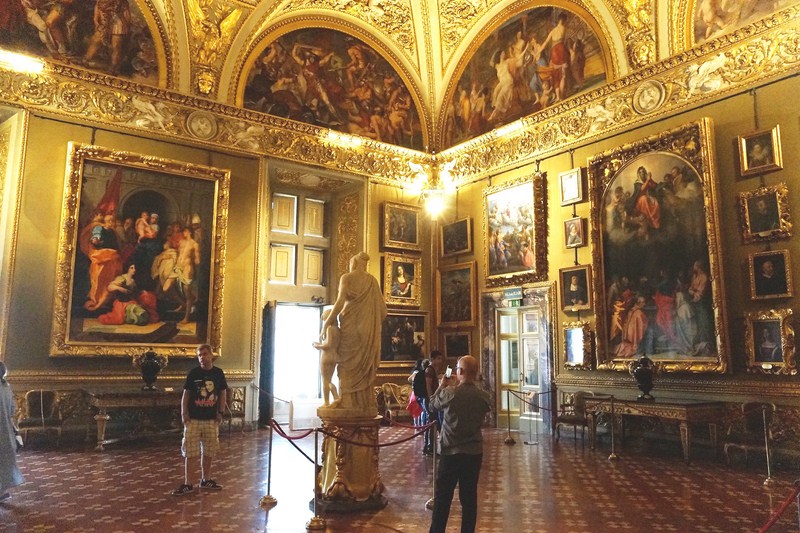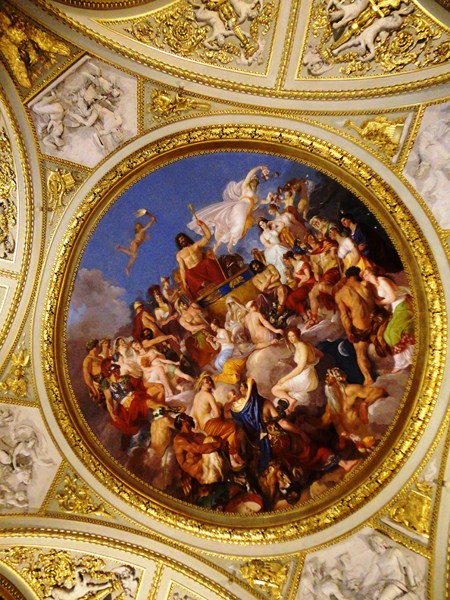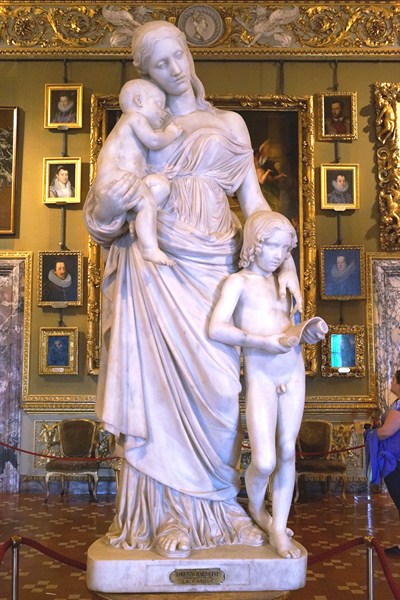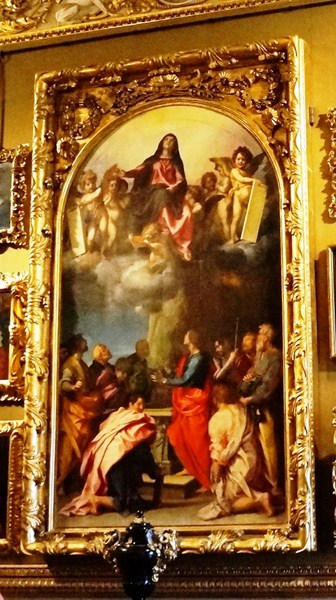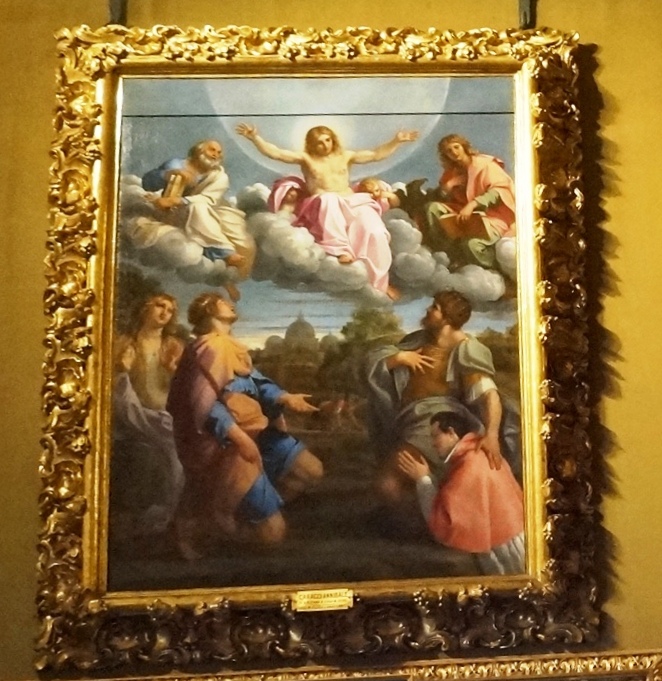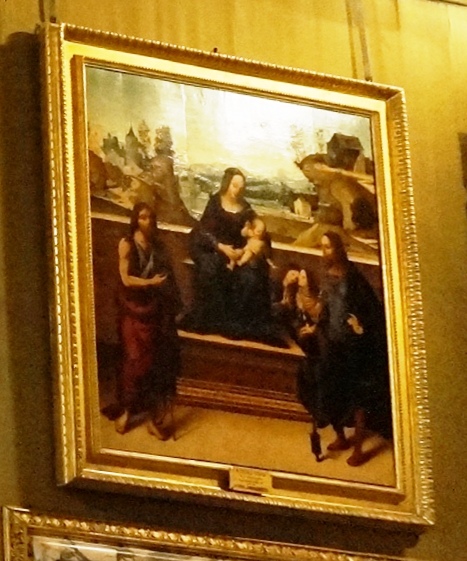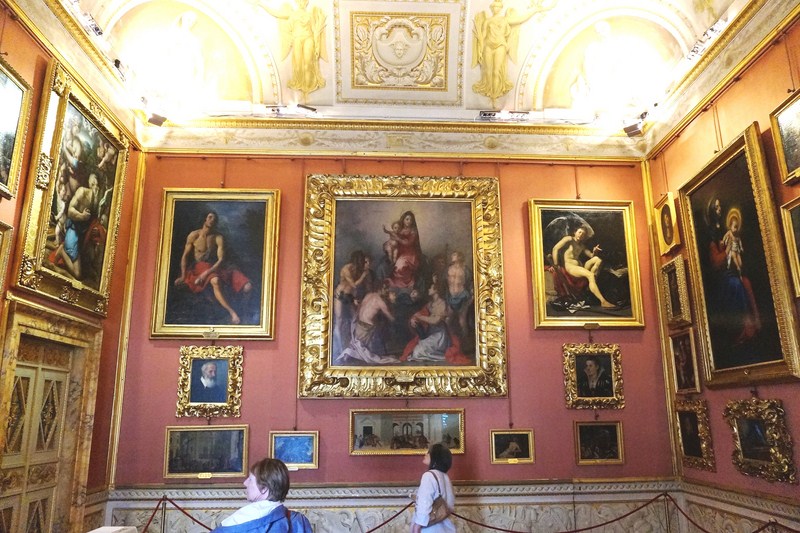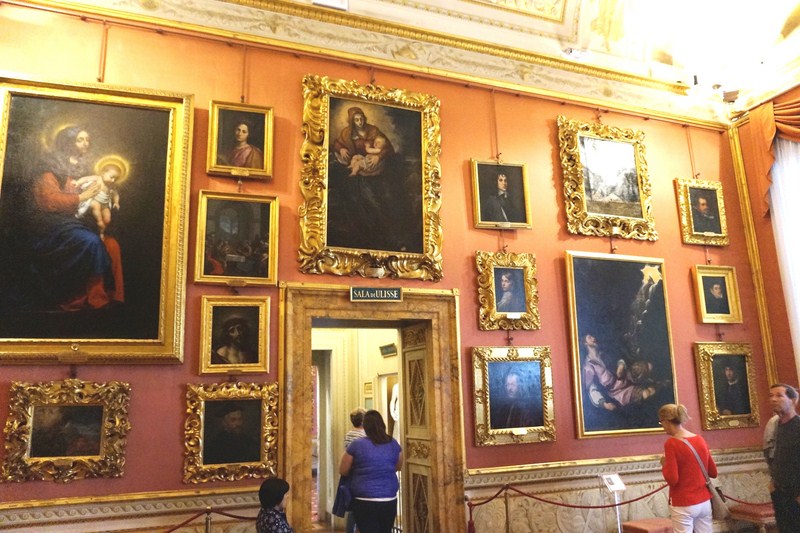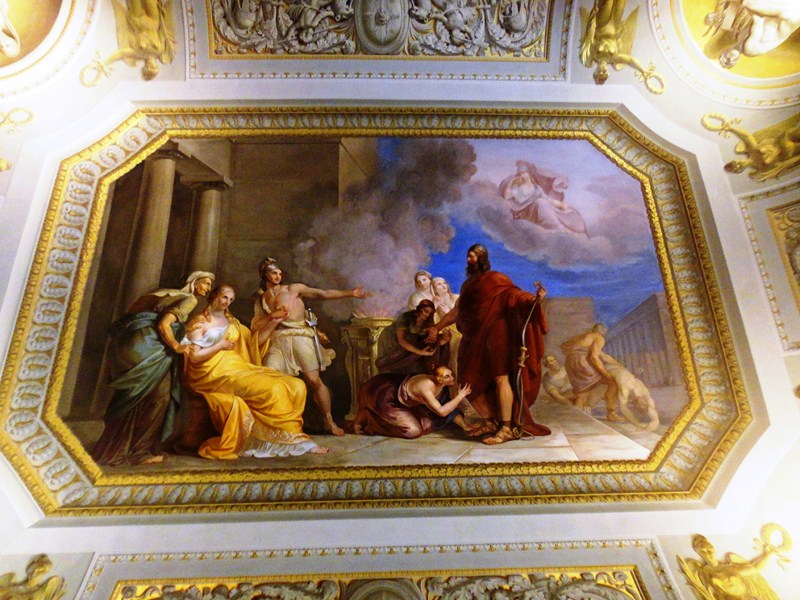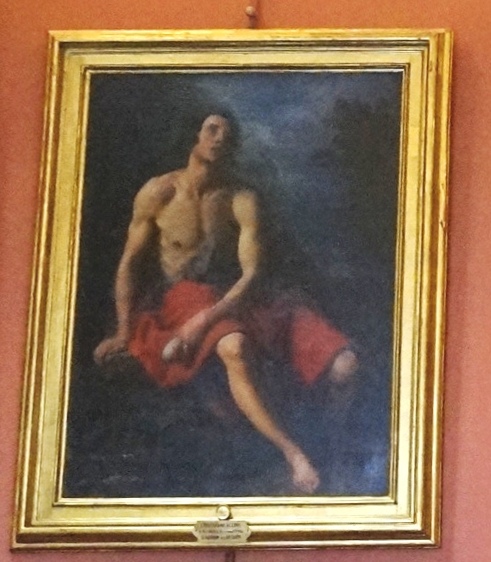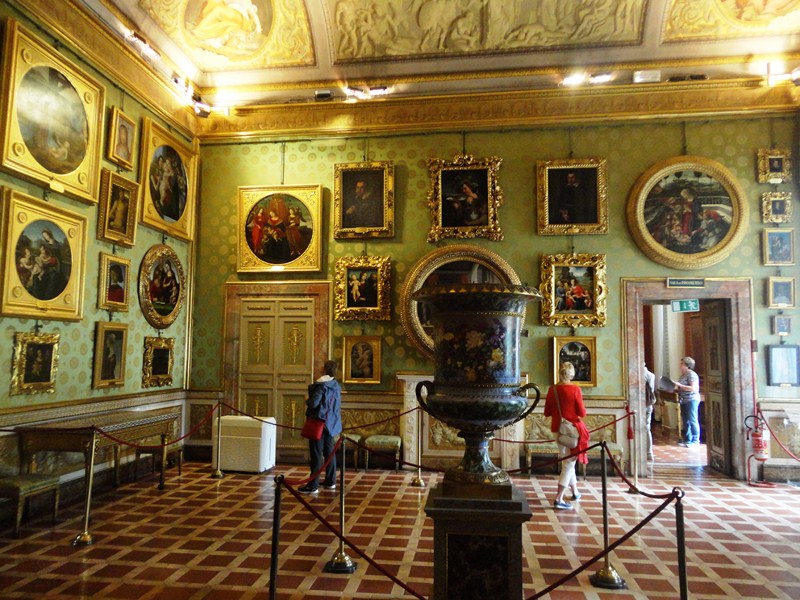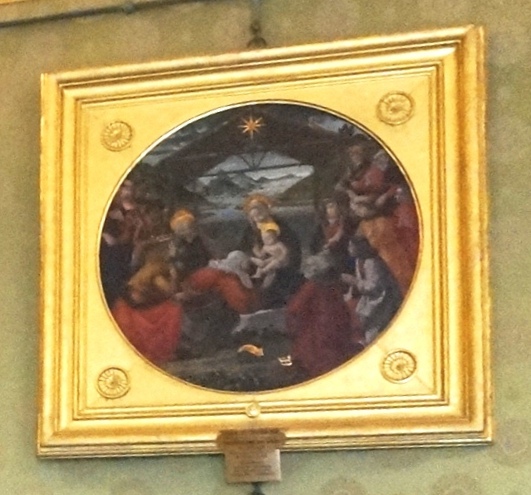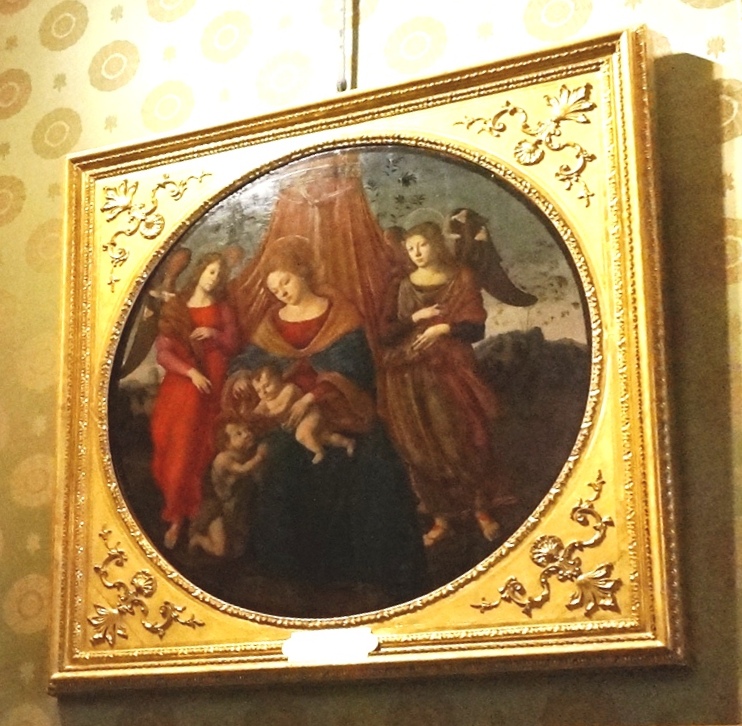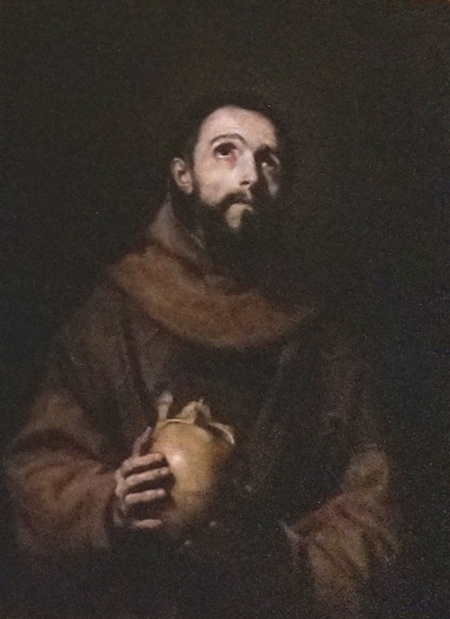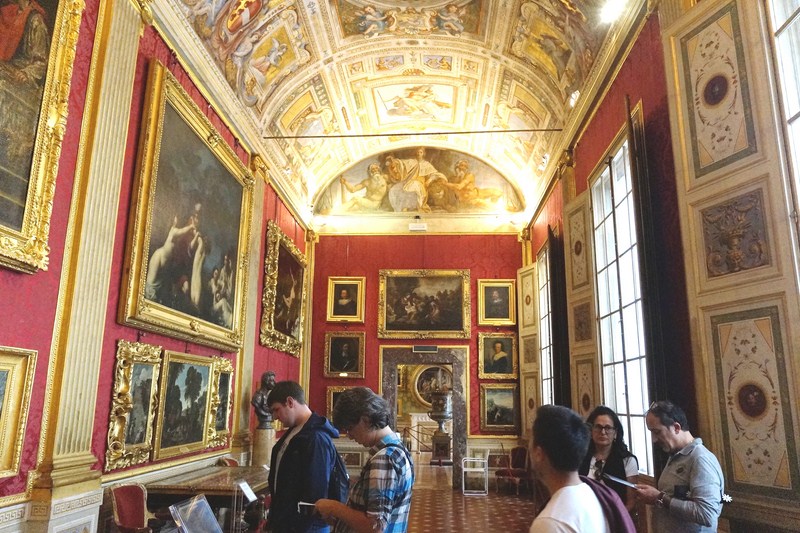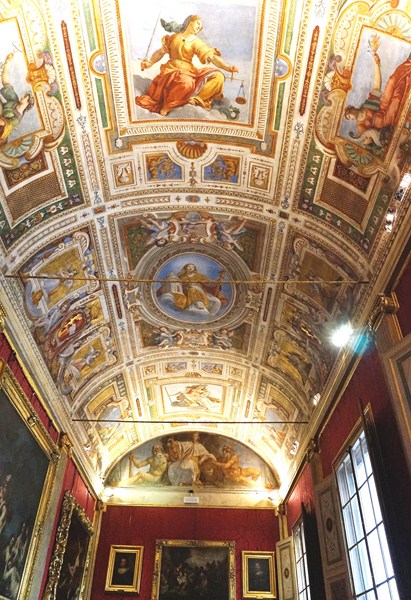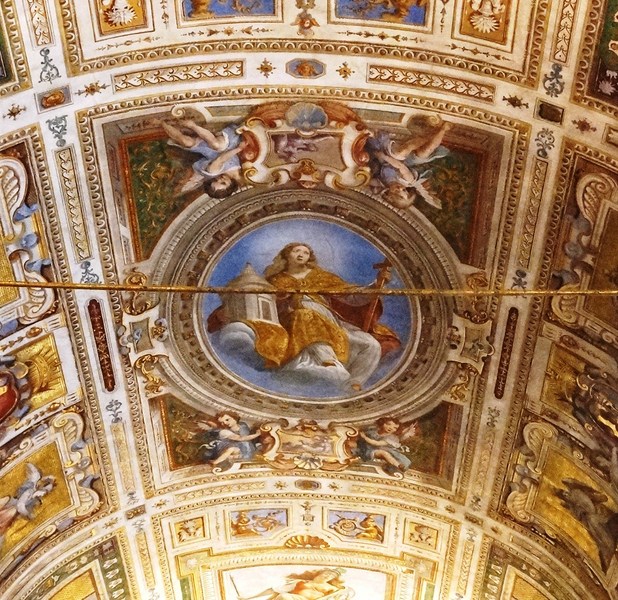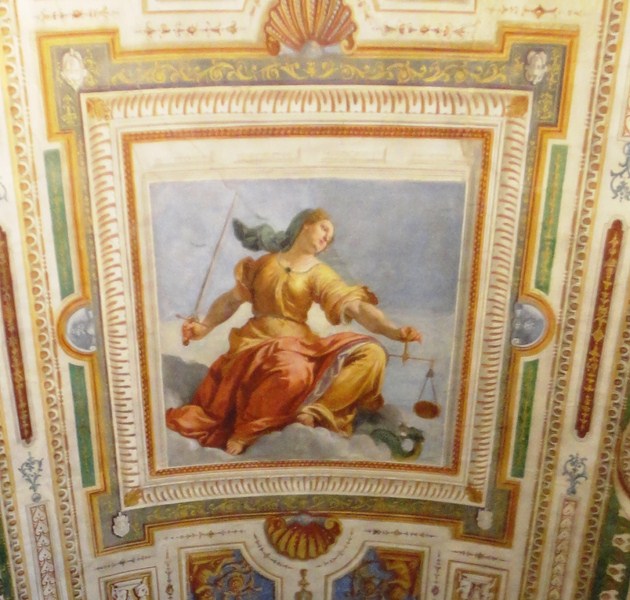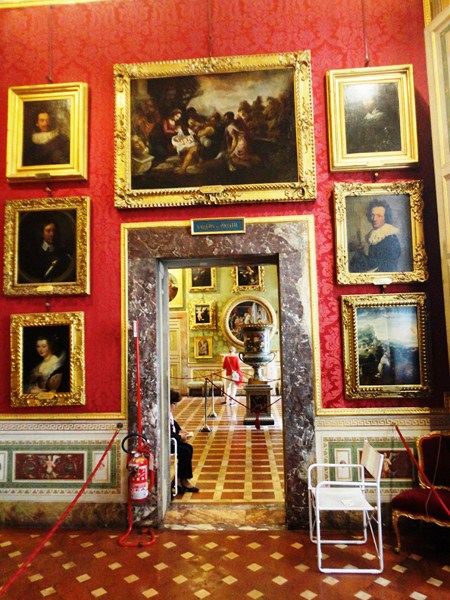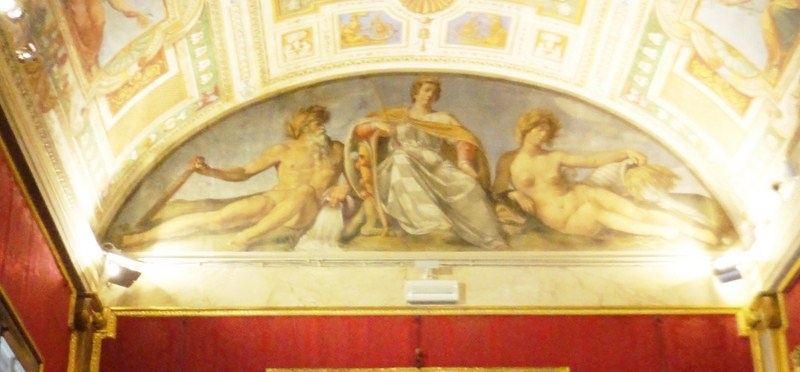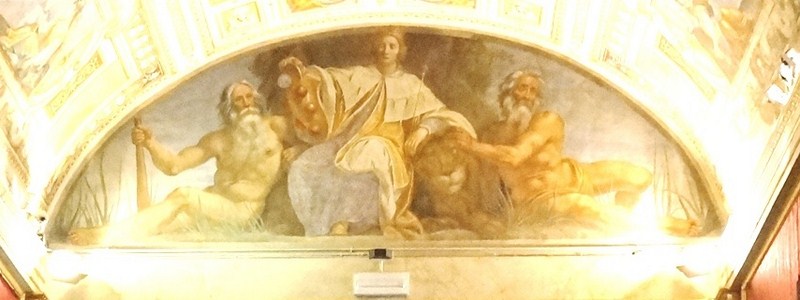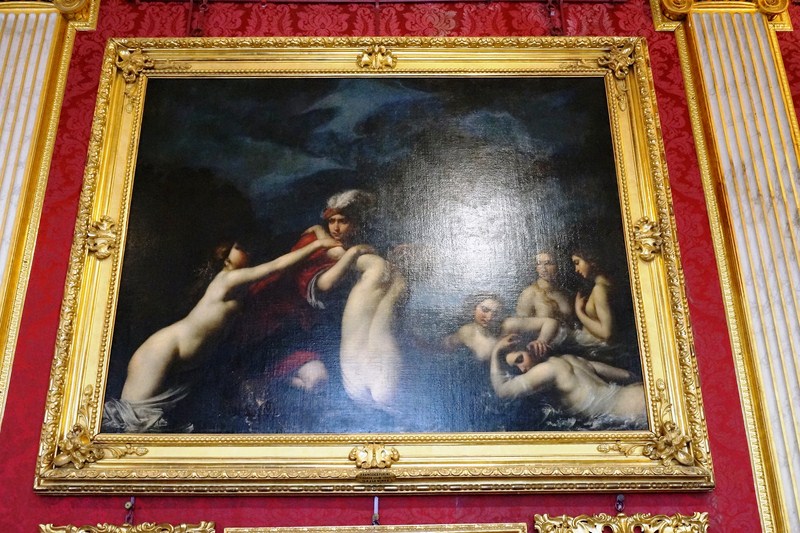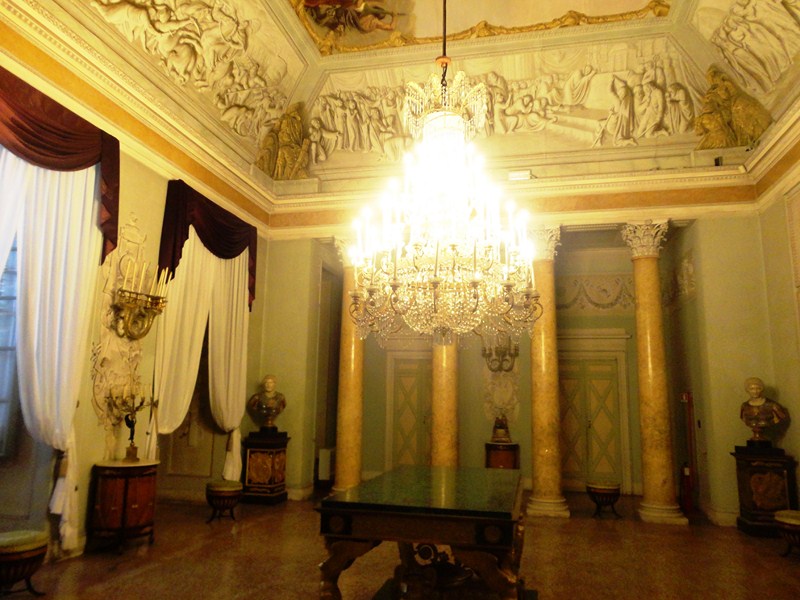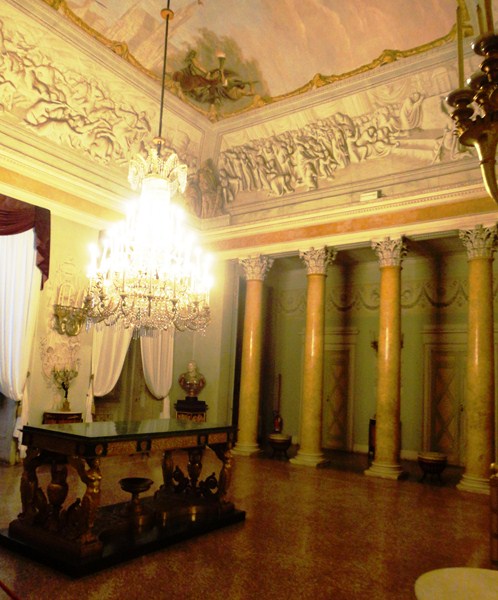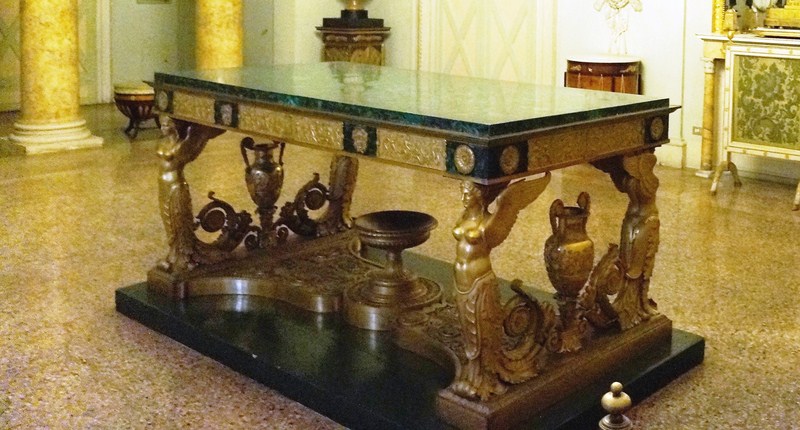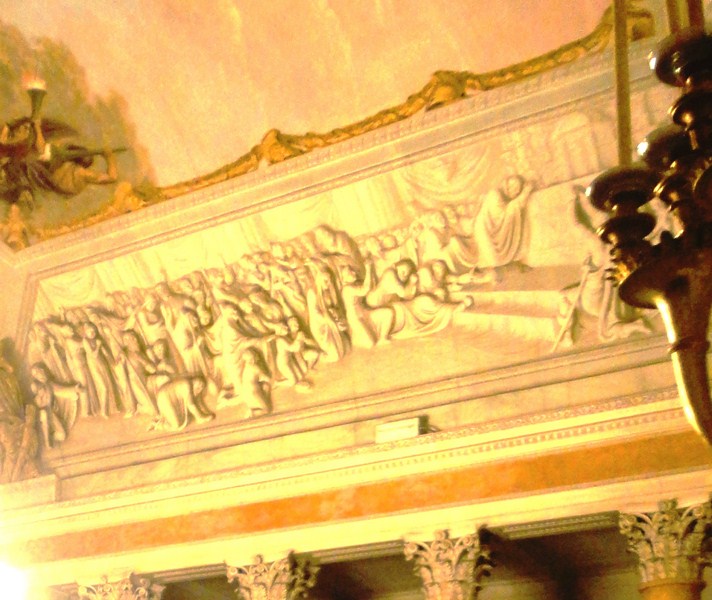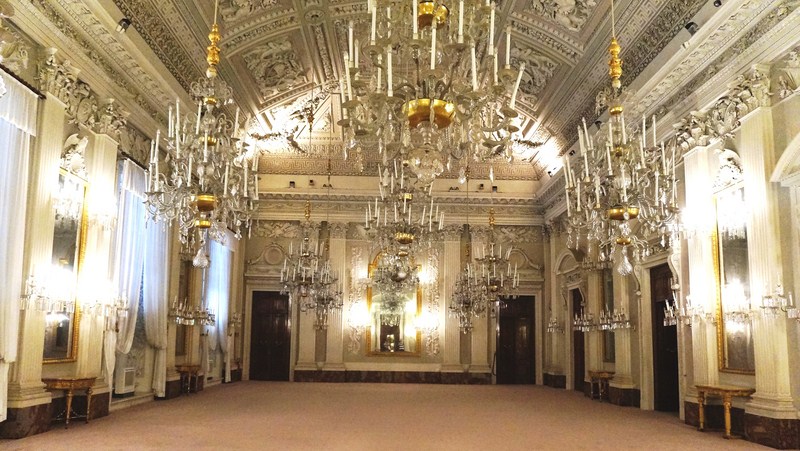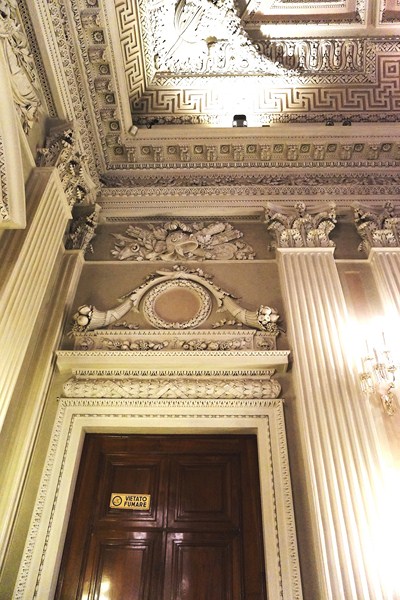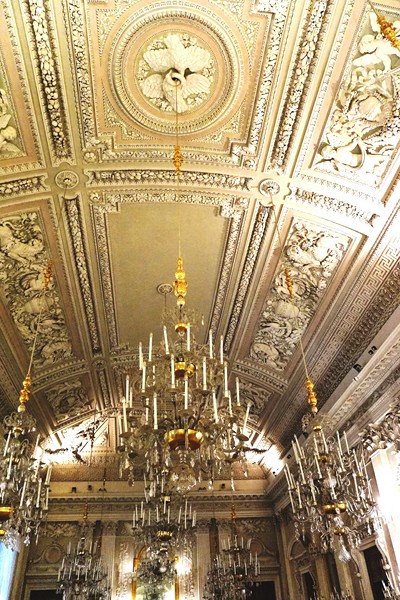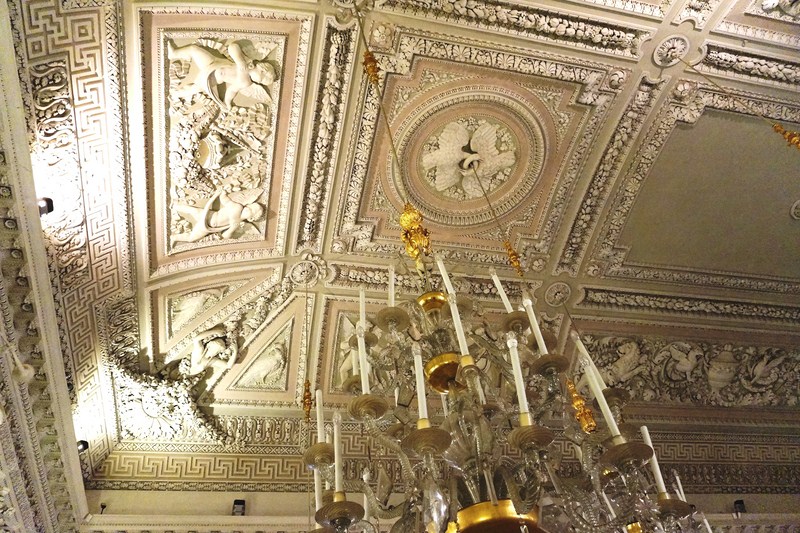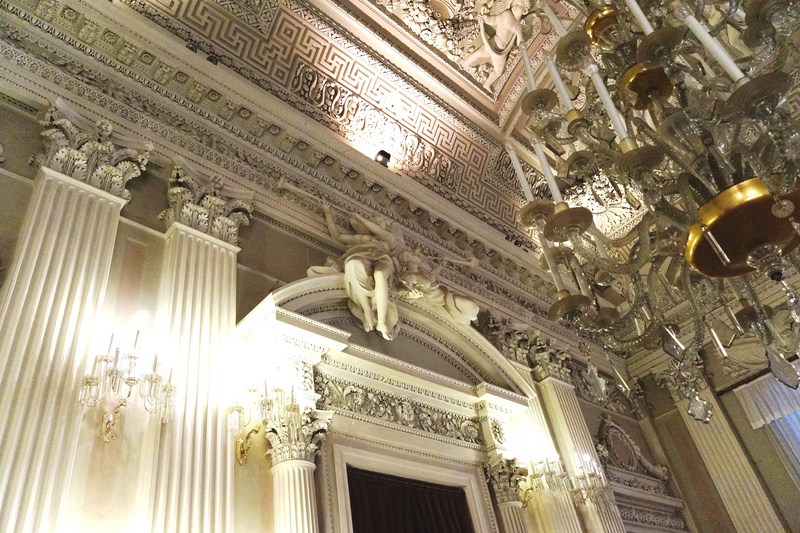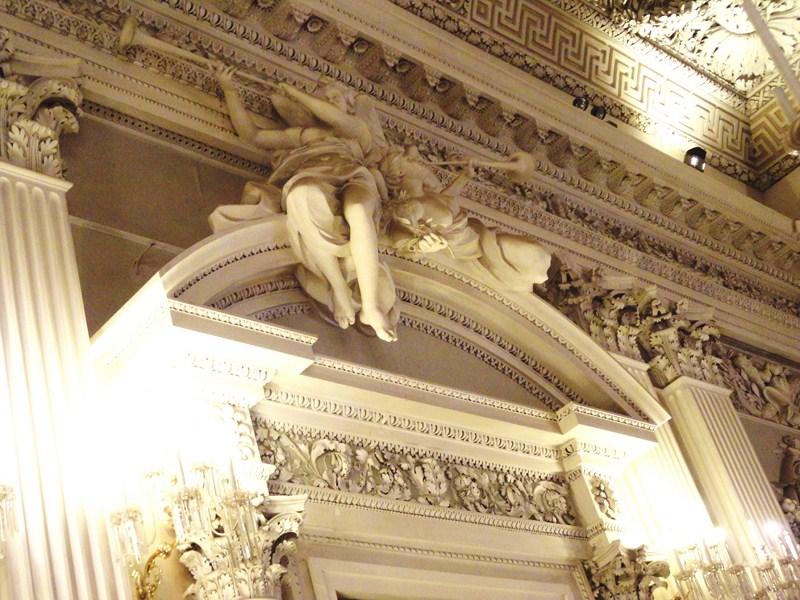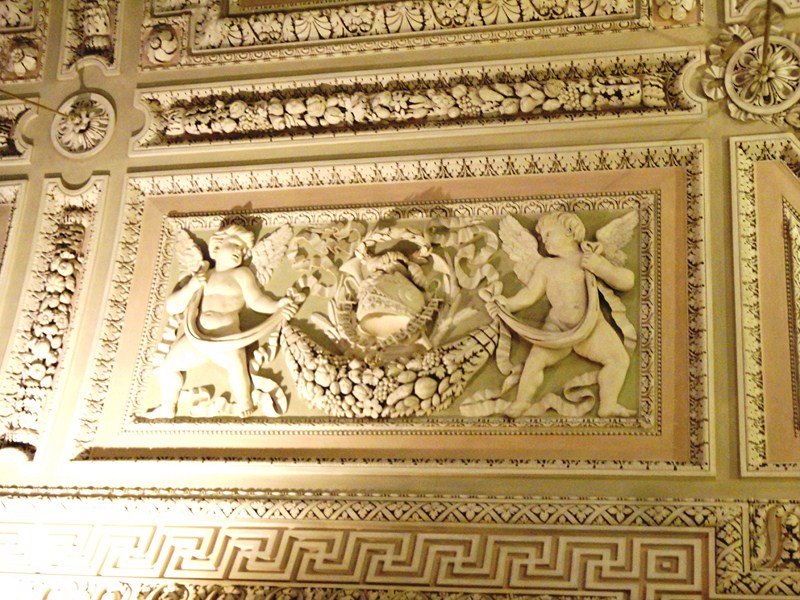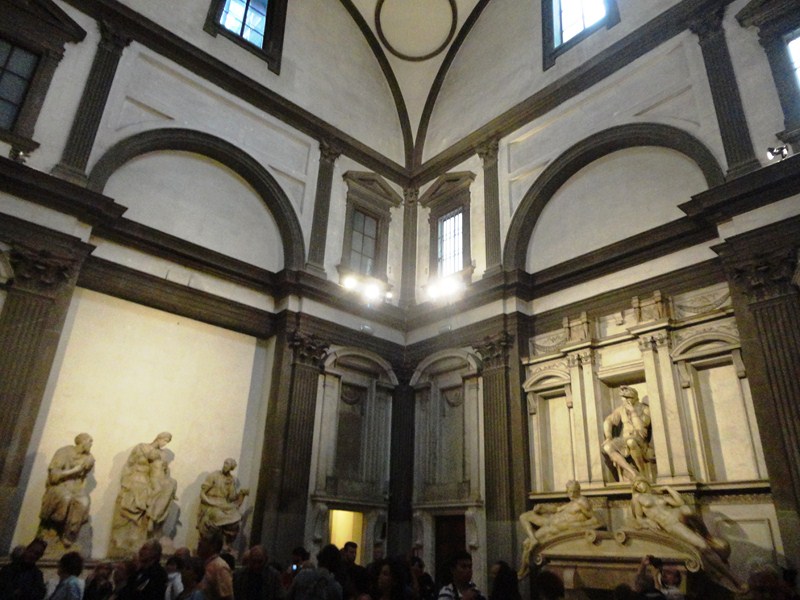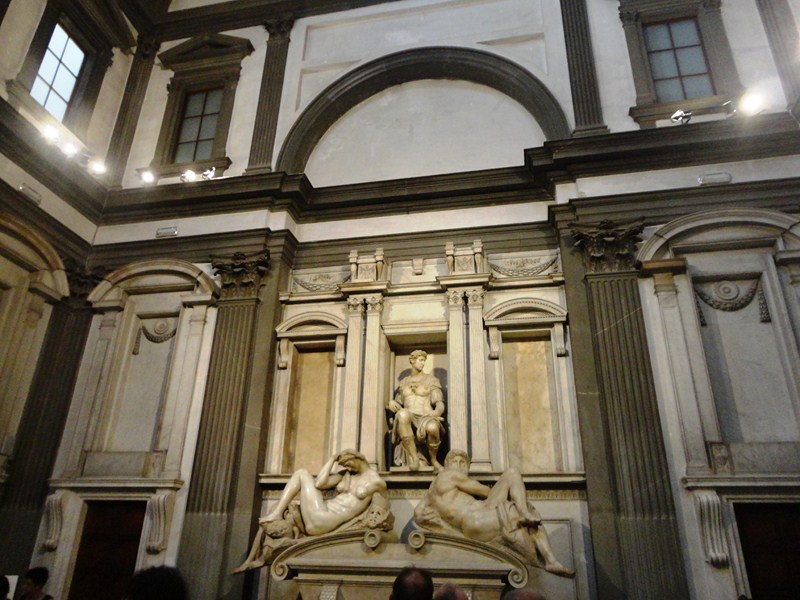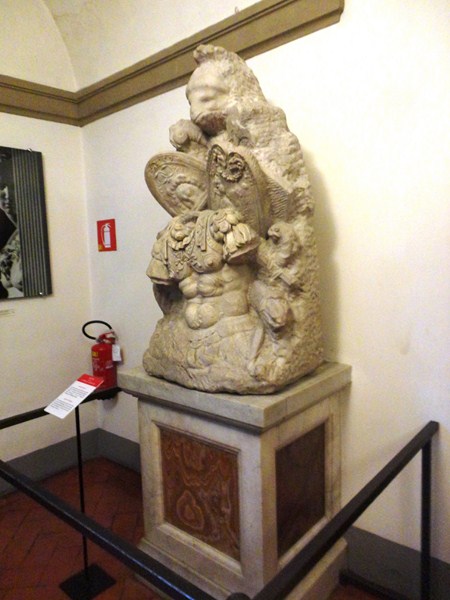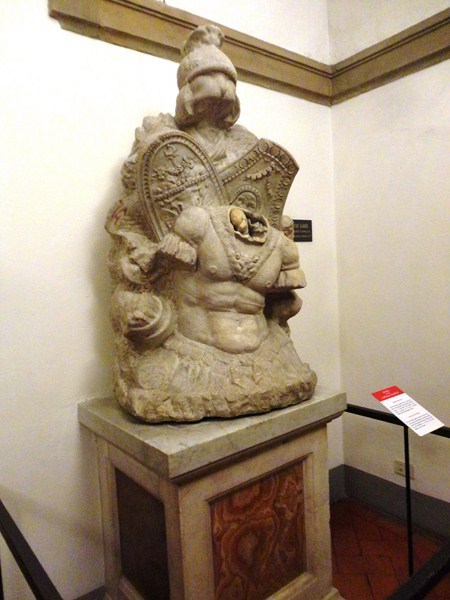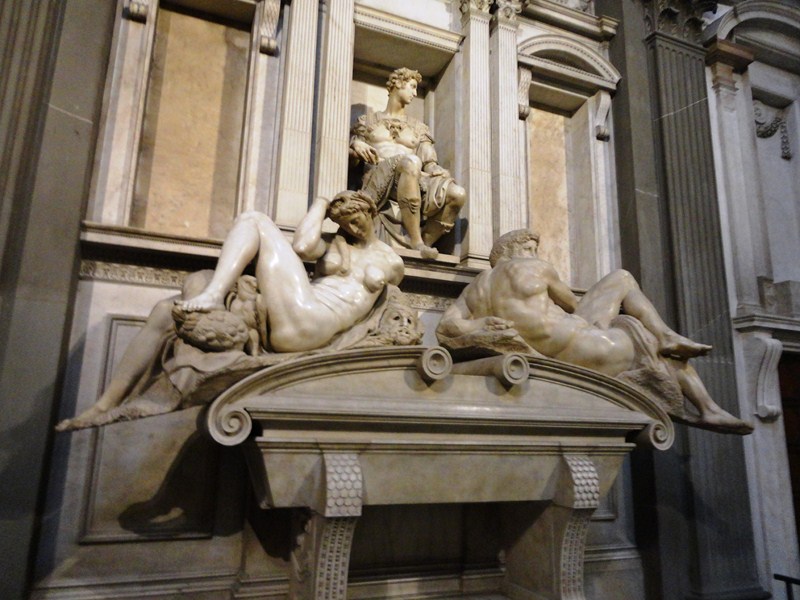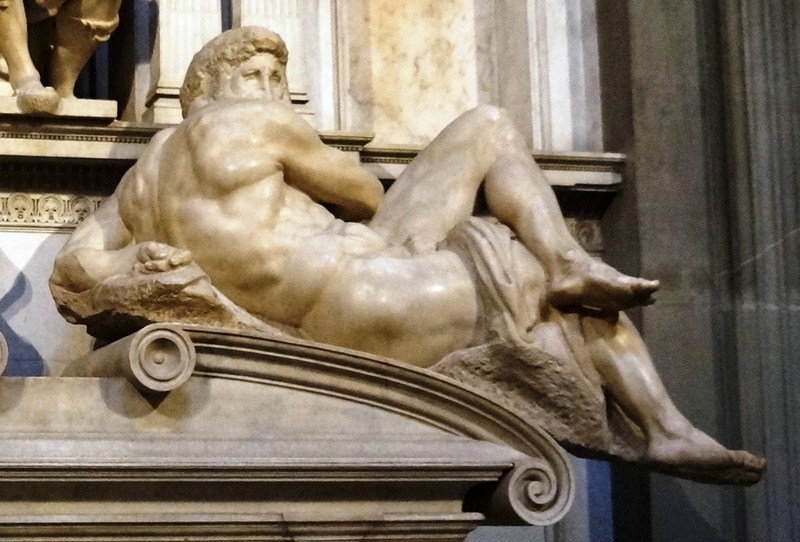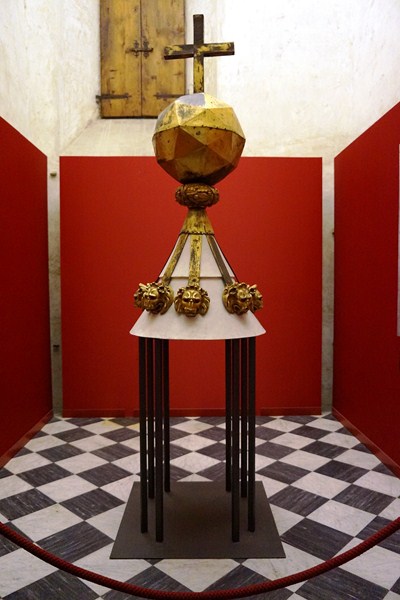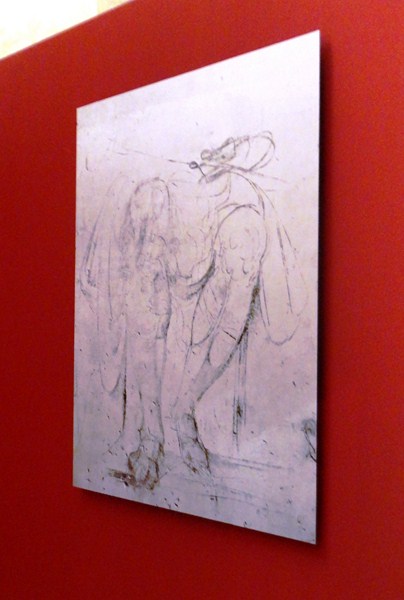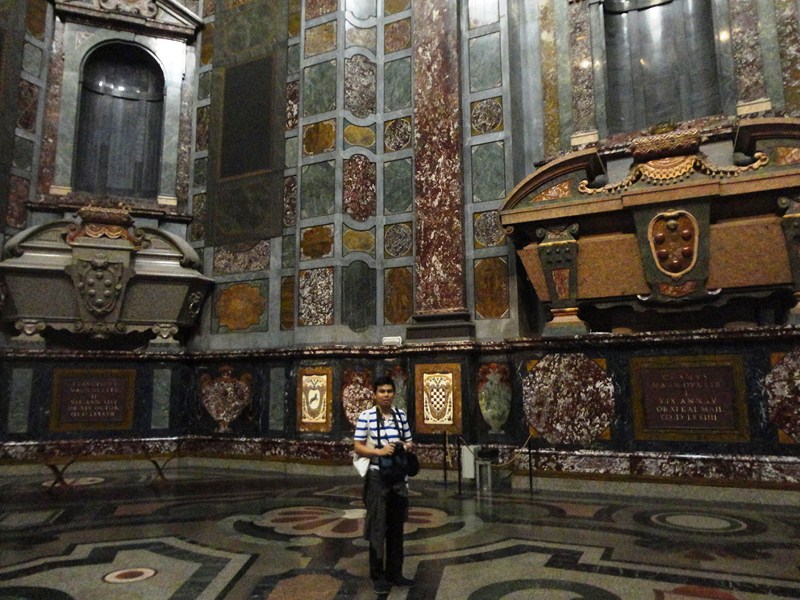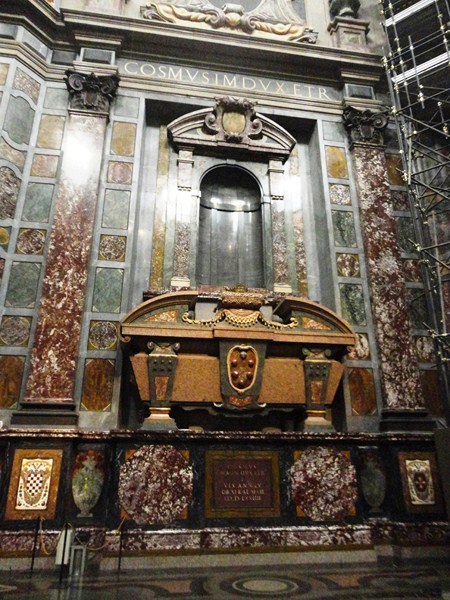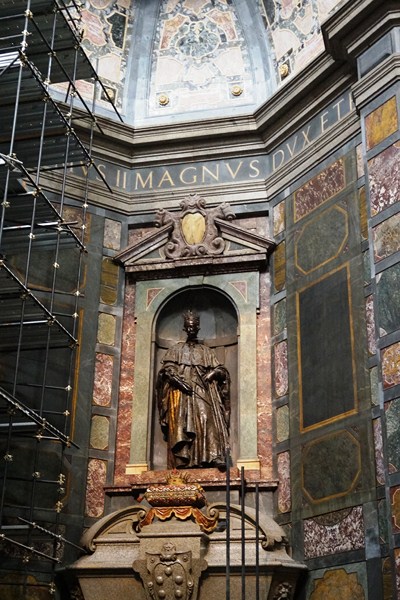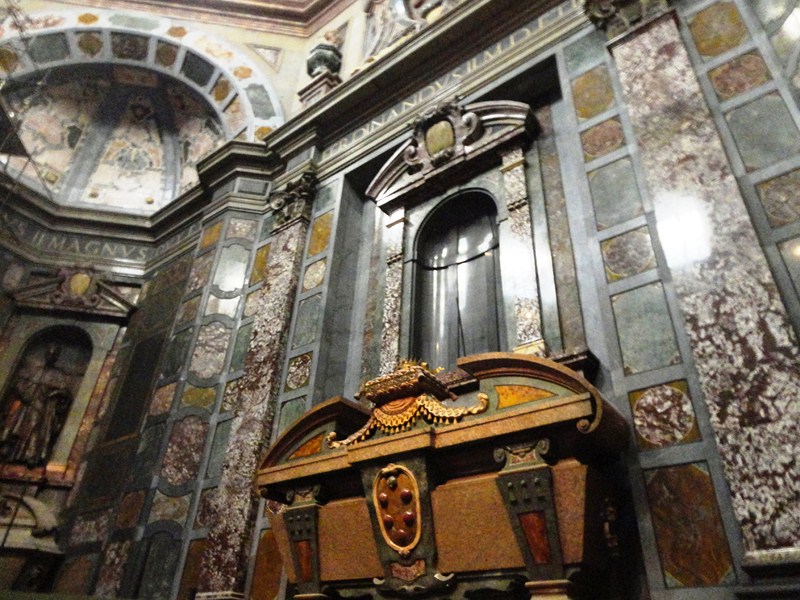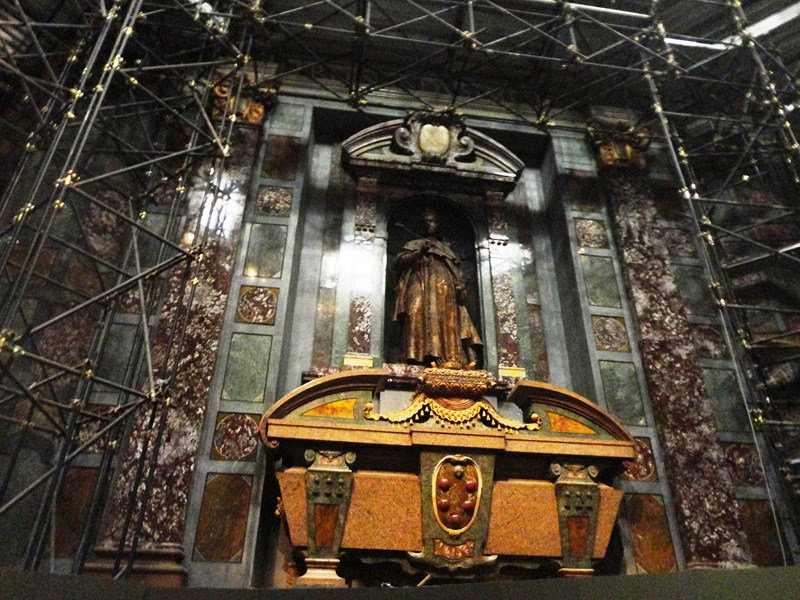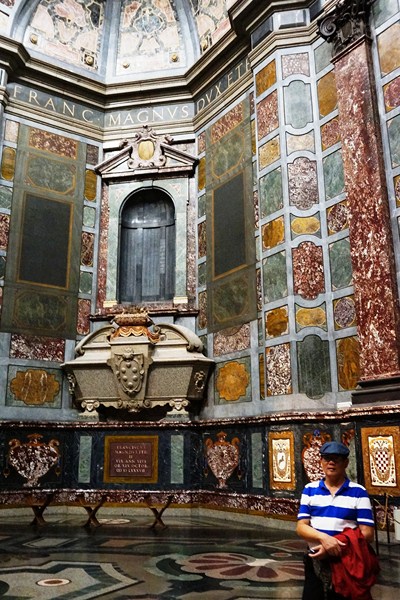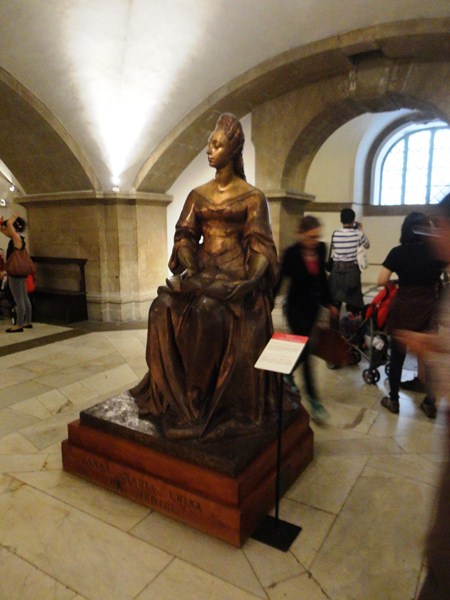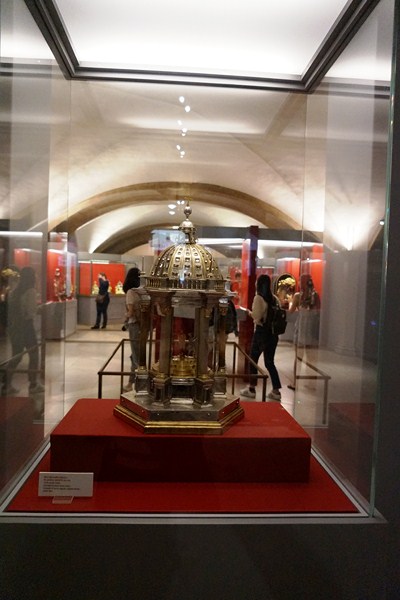Located next door to the Grand Duke’s bedroom, the Room of the Stove (Sala della Stufa) was, in the past, an open loggia or gallery that was later closed off in the seventeenth century and restructured as a “stove,” a bathroom heated using the same techniques as the Roman baths and intended for private use by the Grand Duke. It still contains the pipes of the heating system.
Its decoration, commissioned by Grand Duke Ferdinando II de’ Medici, was done in three phases. Between 1625 and 1627, the Grand Duke employed various Florentine masters including Michelangelo Cinganelli , Matteo Rosselli and Ottavio Vannini to decorate the vaults and lunettes with images of the great monarchies of antiquity and allegorical figures. The stuccoes were instead made by Antonio Novelli and Sebastiano Pettirossi.
Later, in 1637, Pietro da Cortona was then entrusted to decorate the walls with a depiction of The Four Ages of Man (a theme inspired by Ovid‘s Metamorphoses and most likely conceived by Michelangelo Buonarroti the Younger), painting the Golden Age (which alludes to the happy reign of Ferdinand II de ‘Medici and his union with Vittoria della Rovere) and Silver Age (which dates back to the painter’s first stay in Florence in 1637) diptych.
In the Golden Age painting, farmers, children and animals coexist in harmony in the imaginary Arcadia, evoking the peaceful and happy rule of Grand Duke Ferdinand II de ‘Medici, whose reign further flourished following his marriage, in 1637, to Vittoria della Rovere. This joyous event is alluded to by the painter in his portrayal of a young couple courting below the majestic oak, the heraldic emblem of the Rovere family, and the heraldic Marzocco lion, symbol of Florence and the Medici house.
In 1641, Pietro followed this up with the scenes of the Bronze Age and Iron Age on the basis of a prior plan, paintings which were more agitated and Rubenesque in nature, painted some years apart and which contrast images of a civilized society with the violent events of war, another example of an erudite iconographic technique.
These frescoes, representing a fundamental work of the Baroque in the city, gave new impetus to the Florentine school of painting. The birth of the great Baroque murals, it marked the arrival of a new style in Florence which introduced a lighter lexicon and narrative inspired by the Venetian paintings of Paolo Veronese and the Roman frescoes of Annibale Carracci.
The floor, covered in 1627 with majolica tiles from the Montelupo factory, was almost completely and faithfully restored, copying the ancient design (based on cartoon by Giulio Parigi), and carried out in the early twentieth century by the Cantagalli Manufacture. In the center of the floor stands the Triumph of the Monarchy, the only original part. Other fragments of the original floor, found in a cellar, are now in display in the adjacent vestibule of the Del Moro staircase.
Works in the Stove Room include:
Frescoes (vault)
- Fama (Michelangelo Cinganelli, 1625-27)
- Fortress (Michelangelo Cinganelli, 1625-27)
- Fortuna (Ottavio Vannini, 1625-27)
- Justice (Michelangelo Cinganelli, 1625-27)
- Prudence Matteo Rosselli, 1625-27)
- Roman Monarchy (Ottavio Vannini, 1625-27)
- Monarchy of the Saracens (Ottavio Vannini, 1625-27)
- Monarchy of the Turks (Michelangelo Cinganelli, 1625-27
- Monarchy of Austria (Matteo Rosselli, 1625-27)
- Monarchy of the Assyrians (Matteo Rosselli, 1625-27)
- Monarchy of the Persians (Michelangelo Cinganelli, 1625-27)
- Macedonian Monarchy (Michelangelo Cinganelli, 1625-27)
Frescoes (walls)
- Golden Age (Pietro da Cortona, 1637)
- Silver Age (Pietro da Cortona, 1637)
- Bronze Age (Pietro da Cortona, 1641)
- Iron Age (Pietro da Cortona, 1641)
- Allegory of Commerce (unknown author, 17th century)
- Allegory of Justice (unknown author, 17th century)
- Vase (Sèvres manufacture, 19th century)
- Cloaked female figure with veiled head (Roman art, 2nd century AD)
- Female figure with patella and flute (Roman art, 2nd century AD)
- Female figure with cornucopia (Cybele?) (Roman art, Imperial age)
- Vibia Aurelia Sabina (Roman art, imperial age)
Room of the Stove: Pitti Palace, Piazza de’ Pitti, 1, Florence, Italy. Tel:+39 055 294883. Open Tuesdays-Sundays, 8:15 AM – 6:50 PM. Admission: Palatine Gallery (€8.50), Silver Museum (€6.00), Gallery of Modern Art (€8.50), Costume Gallery/Porcelain Museum/Boboli Gardens/Bardini Garden (€6.00).
How to Get There: Take the C3 or D bus to the Pitti stop.


